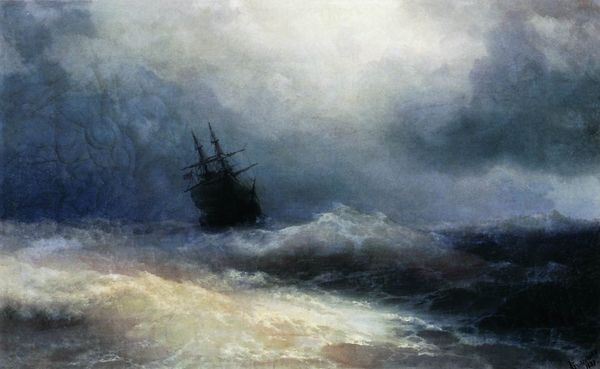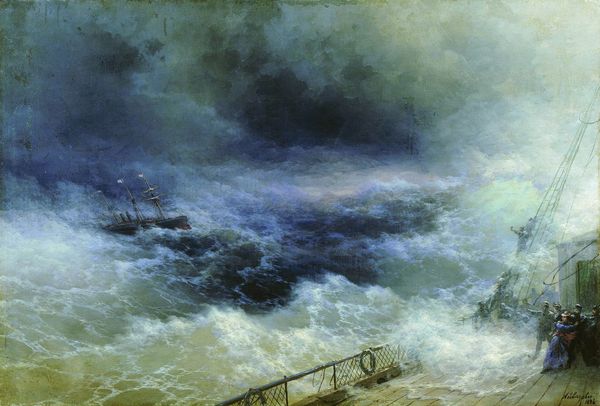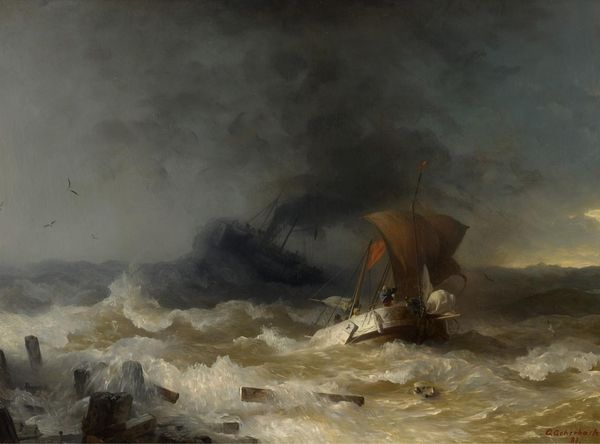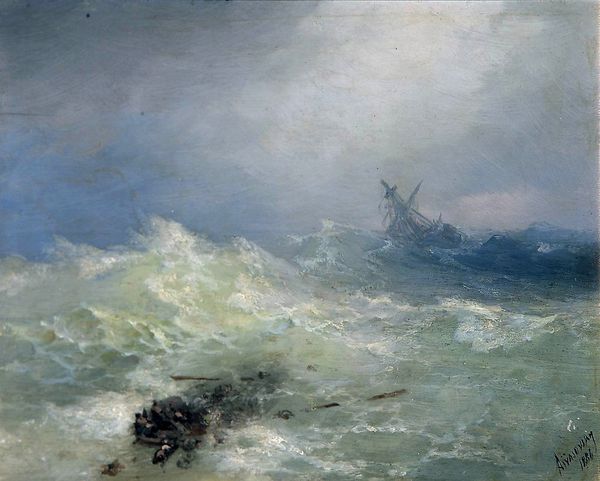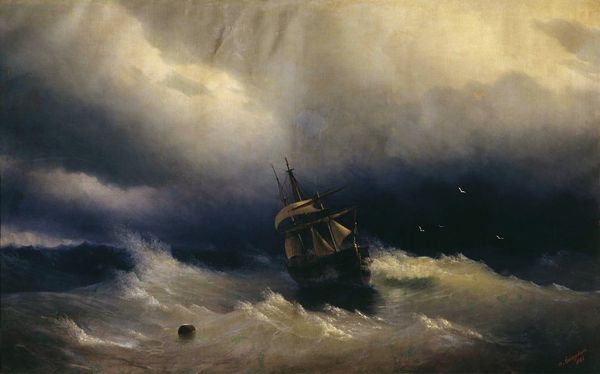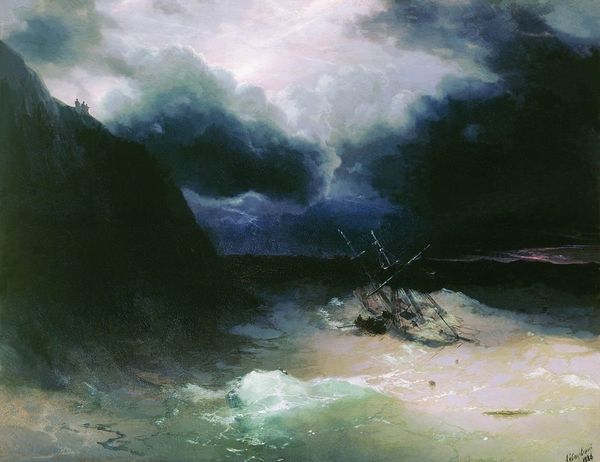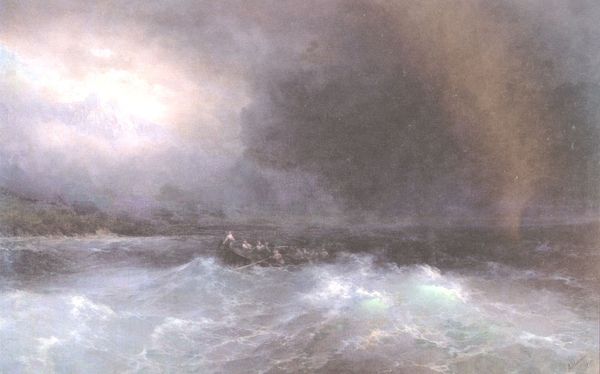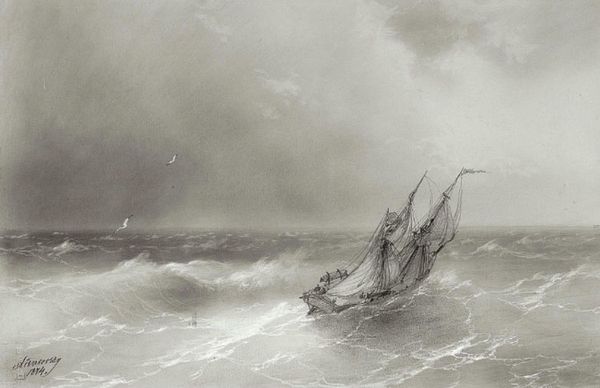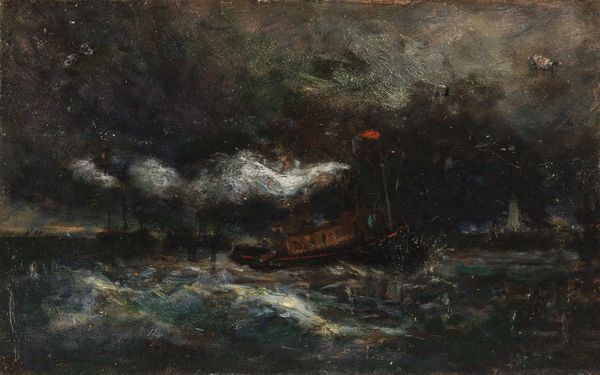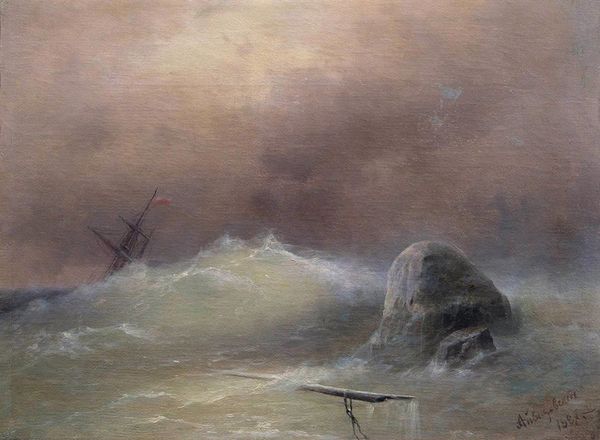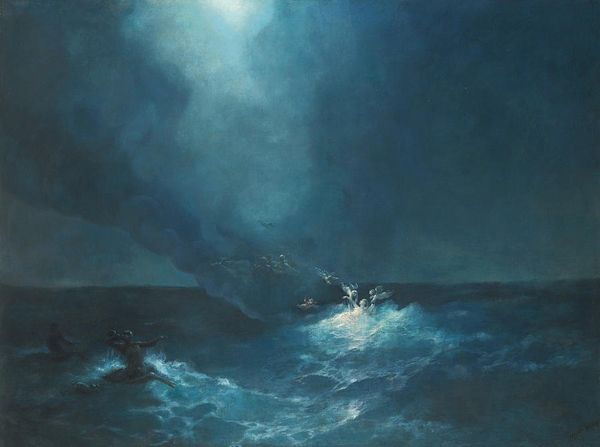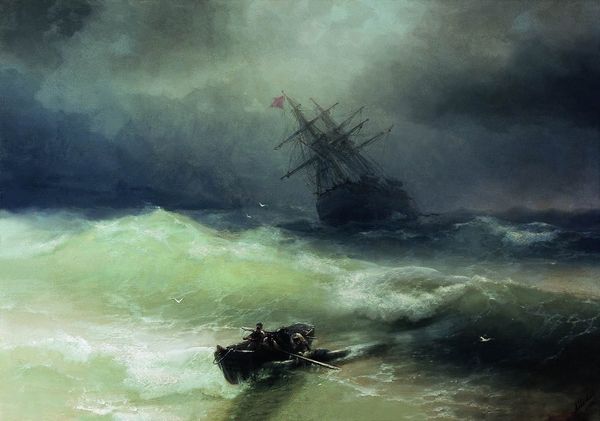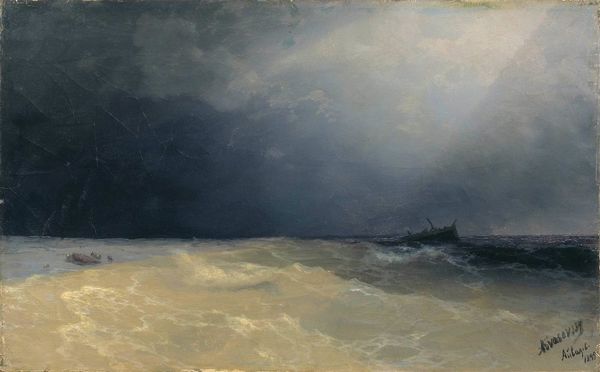
Copyright: Public domain
Curator: Standing before us is Ivan Aivazovsky's "The Tempest," an oil painting completed in 1899. Editor: It's overwhelmingly turbulent. The sky seems to swallow the small, struggling ship. Curator: Absolutely. Aivazovsky was a master of marine painting, renowned for his dramatic seascapes. Notice how the churning water, rendered with impasto, feels both powerful and ethereal. Editor: The brushstrokes really amplify that feeling. Looking at the boat being overtaken, it feels representative of humankind’s fragile existence against the awesome force of nature. Ships have such heavy symbolic meanings, usually of commerce and progress, which are completely inverted here. Curator: Indeed. The tempest as a symbol appears across cultures, representing chaos, trials, and the power of the subconscious to overwhelm the rational. The almost biblical force feels intentional, tapping into centuries of cultural understanding of such things. Editor: And how he uses light! That single break in the clouds seems both hopeful and almost cruelly mocking in the face of the disaster below. It is almost as though a higher power is exposing the fragility below. Curator: Consider also the Romanticism period influences. "The Tempest" carries the Romantic obsession with the sublime – the awe and terror evoked by nature's grand scale. Editor: The movement of that water... you can almost feel it. Looking closer, the artist gives form to water using the oil's textural possibilities as though making a symbol of painting itself. This painting invites meditation on nature, painting, and the cultural symbolism that both entail. Curator: Thank you for that visual insight! It deepens my connection with the layers embedded in such a classical romantic picture.
Comments
No comments
Be the first to comment and join the conversation on the ultimate creative platform.
